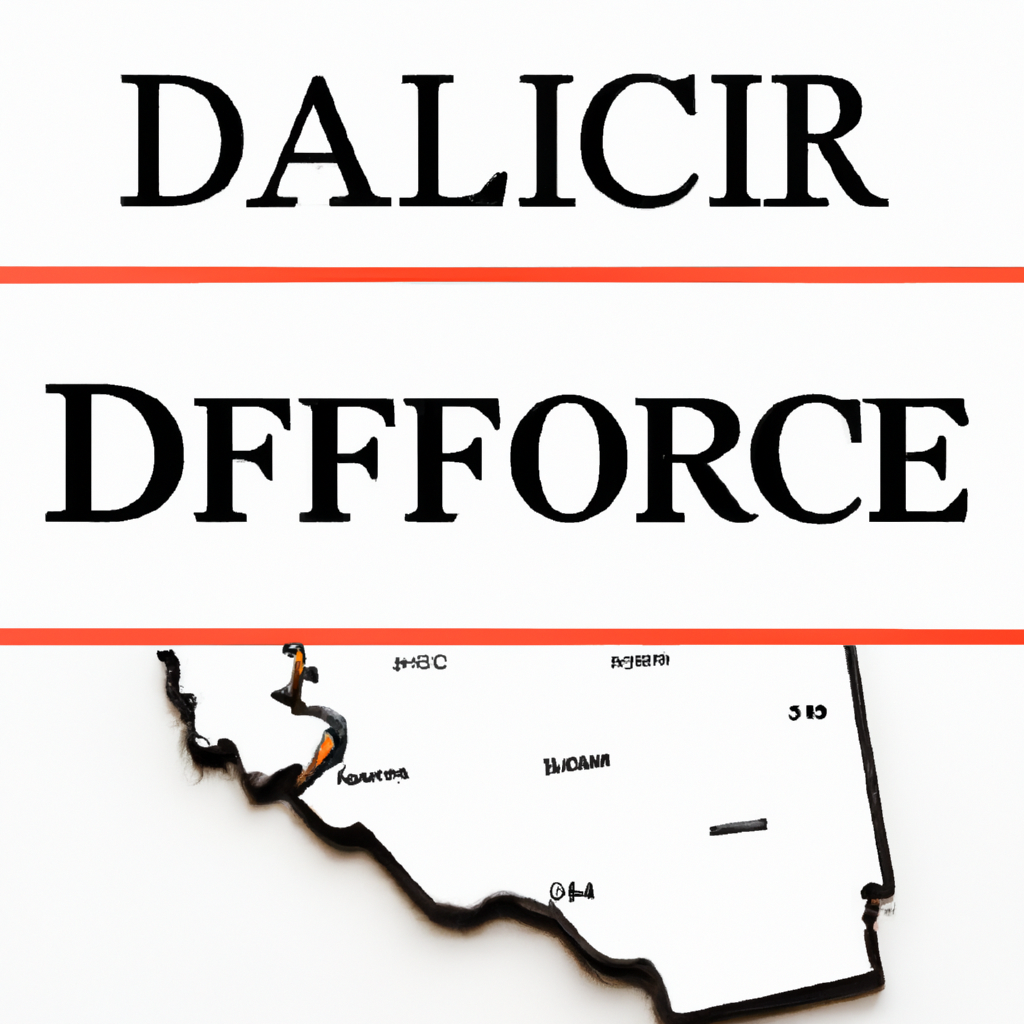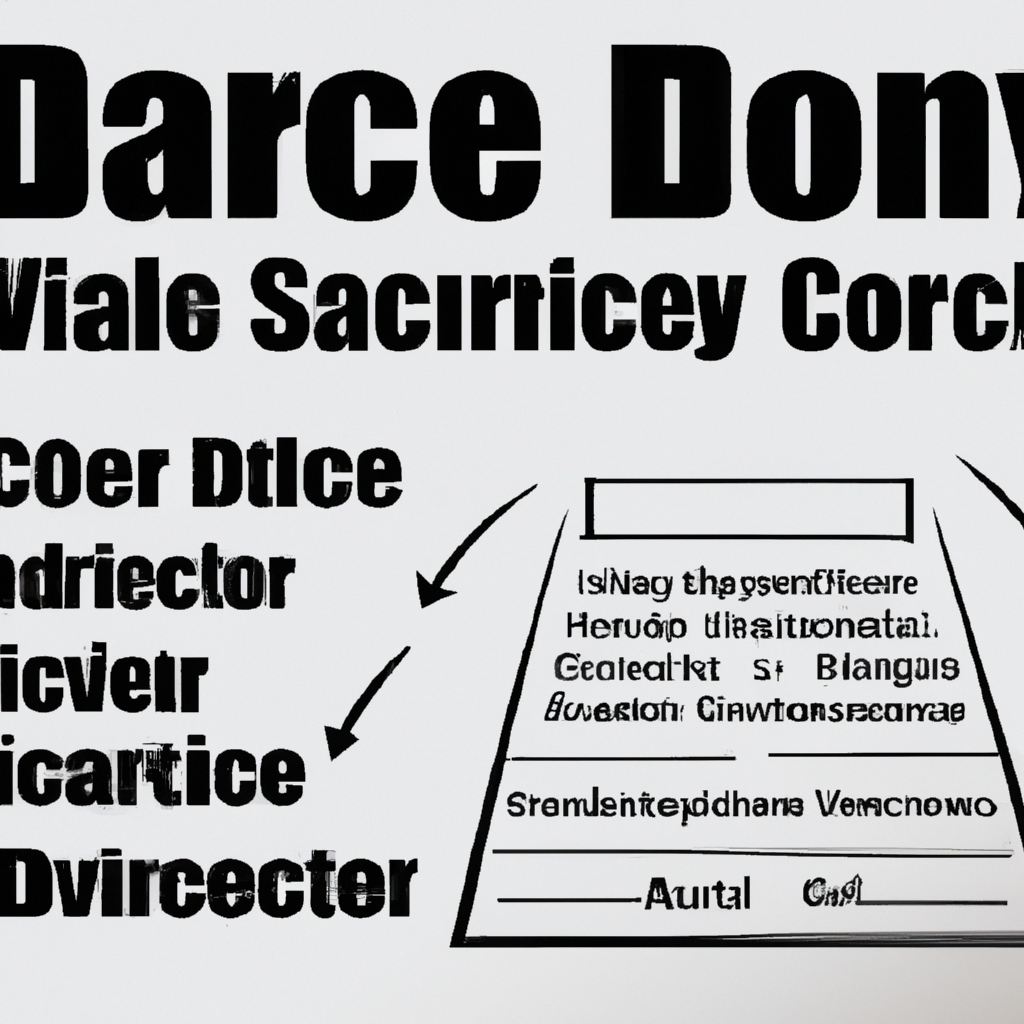The legendary musician, Neil Sedaka, crooned ”Breaking up is hard to do,” and all complexity amplifies when saying adieu tips from romance into matrimonial territory. It dances with legalities, veils itself in paperwork, and garners an even larger emotional cost. But just like surfing the fierce waves of the San Diego shores, the process of filing for divorce can be ridden out smoothly if you’re armed with the right knowledge and guidance. This article will serve as your trusty surfboard, propelling you over the tumultuous sea of legal jargon and procedures, guiding you on how to file for divorce in the beautiful, yet heartbreak city of San Diego. Buckle up for a journey that promises navigational ease during these tough times.
Table of Contents
- Understanding the California Divorce Laws: The Basics
- An Overview of San Diego County’s Divorce Process
- Gathering Necessary Documents: The Initial Step
- Maximizing the Role of your Divorce Attorney in San Diego
- Turning Emotions into Action: How to Prepare a Divorce Petition
- Effective Techniques for Swift and Smooth Negotiation
- Exploring Child Custody and Spousal Support Regulations in San Diego
- The Final Verdict: From Judgement to Legal Singles in San Diego
- Q&A
- To Wrap It Up
Understanding the California Divorce Laws: The Basics
Dealing with a divorce is never an easy journey to undertake. It’s especially crucial to grasp an overview of the legal aspects which impact the process. One of these is the palpable need to comprehend California divorce laws. The Golden State operates under specific rules and regulations that may vary from other U.S. states. The foundational understanding of these laws can aid you in navigating this emotionally draining process with a bit more ease.
Firstly, it’s vital to familiarize yourself with the concept of ‘no-fault’ divorce. In California, this means that neither party is obliged to prove that the other is responsible for the breakdown of their marriage. Typically, one party stating “irreconcilable differences” is sufficient for a divorce to be granted. Also, it’s important to note that California law utilizes community property rules. Simply translated, any assets acquired during the marriage will be evenly split upon divorce.
- The law does, however, allow for certain exceptions. Notably, any property acquired before the marriage, as well as inheritances and gifts, may be recognized as separate property and may not be split.
- The duration that you have been married can also impact the divorce procedure. Generally, a marriage of less than five years is considered a ‘short-term’ marriage, while a marriage longer than ten years is recognized as a ‘long-term’ marriage.
- Lastly, child custody and spousal support are other significant areas of concern in California divorce law. The court typically prioritizes the best interests of the child and considers several aspects including, the child’s age, health, emotional ties to parents, and the ability of the parents to care for the child.
An Overview of San Diego County’s Divorce Process
Navigating through the complexities of the divorce process in San Diego County can be challenging. While every situation is unique, there is a standard sequence of steps to follow, which generally start with the filing of a petition and conclude with a final judgement. It’s important to remember that although the process may seem intimidating, there are professionals and resources available to assist you every step of the way.
The initial part of the process involves one spouse filing a Petition for Dissolution of Marriage and the other spouse being served with the papers. At this point, they have the opportunity to file a response. Next, the partners exchange financial information in what is known as Discovery. This process allows everyone involved to understand the full financial picture, so assets and debts can be divided fairly. Subsequent steps may vary based on the couple’s circumstances, but one common aspect is temporary orders. These are established to standardize living conditions during the divorce proceedings. Such orders may include:
- Child custody and visitation
- Spousal or child support
- Property restrictions to maintain the status quo
After temporary orders, you may enter into negotiation or Alternative Dispute Resolution, like mediation, to resolve any disputes before the final judgement. In the absence of a satisfactory resolution, the case goes to trial. This would be the final stage where a judge makes the decisions. This summary provides a broad-brush view; each divorce process is as unique as the individuals involved.
Gathering Necessary Documents: The Initial Step
Embarking on any new venture usually requires a significant amount of paperwork and accumulation of necessary documents. The initial step often involves navigating the circuitous labyrinth of document collection. Rest assured, while it can be overwhelming at first, with a systematic approach, it can be navigated successfully.
Before you begin, it’s essential to recognise that every task or project has its unique set of documentation requirements. Be it starting a new business, applying for a home loan, immigration, organizing an event, or even getting involved in a legal case – each situation calls for different types of paperwork. Gathering what’s needed ahead of time will save you from unnecessary stress and headache. Here are some points to keep in mind:
- Research Well: Conduct thorough research about the required documents, keeping in mind legal implications and standard procedures. Go online, visit related forums, seek advice from experts, or consult those who have already gone through the process.
- Checklist: Create a checklist of all the documents you need. This will ensure you are methodically collating everything, minimizing the risk of missing out on any important papers.
- Copy and Secure: Always make copies of important legal documents and secure the originals in a safe place. In this digital age, uploading them securely in the cloud is also a good idea.
- Update Regularly: It is critical that your documents are updated frequently. Make sure all the documents are less than six months old when you submit them.
- Avoid Procrastination: Start gathering your documents early. The longer you wait, the more complications can arise, and you might miss out on some important papers.
The mammoth task of document-gathering can be made less daunting if approached with a comprehensive, step-by-step method. Be diligent, organized, and prompt in your efforts to ensure a smooth journey through any document-intensive process.
Maximizing the Role of your Divorce Attorney in San Diego
Whether you are having a peaceful dissolution or a complicated custody battle, it’s essential to leverage your Riverside divorce attorney’s expertise to the fullest. Making the most out of your legal representation may seem challenging, but it doesn’t have to be. Start by maintaining open communication, aligning on clear goals, and organization.
Maintaining open communication is the key to a productive attorney-client relationship, ensuring your lawyer fully understands your needs and unique circumstances. They can only act in your best interests when they have all the necessary information. Therefore, disclosing all relevant facts, however uncomfortable or unimportant they seem, is vital. In addition, aligning on clear goals with your attorney will help them steer your case in the right direction. Specify what outcomes you prioritize and prefer, such as financial stability, child custody, etc.
Staying organized can significantly help your attorney build a solid case. Have all vital documents, like financial statements, property deeds, and prenuptial agreements, readily available to provide as needed. Furthermore, tracking all conversations and court dates can aid your lawyer in constructing a consistent timeline of events.
- Maintain open and honest communication
- Align on clear objectives
- Stay organized and punctual
Finally, remember that your attorney’s role isn’t solely to win your case. They also provide emotional support and a degree of counseling during this challenging time. Maximizing your attorney’s role means allowing them to help you navigate your divorce’s legal and emotional aspects.
Turning Emotions into Action: How to Prepare a Divorce Petition
Dealing with painful emotions that come with divorce can be tough. However, when we turn these emotions into actions, we can achieve a smoother divorce process. Preparing a divorce petition demands emotional resilience, attentiveness and a systematic approach. Despite the strain and heartache, you can take control and initiate the legal process with confidence.
The very first step is to acknowledge your emotions. From anger to hurt, acceptance to frustration, it’s important to confront these feelings, instead of suppressing them. Use these emotions as your fuel to stay strong and move forward. For example, you can convert your anger into a motivation to study divorce laws in depth or your hurt could encourage you to actively negotiate a fair settlement. Here are few more actions that you can take:
- Draft every detail: No matter how insignificant a detail may seem, it’s crucial that you include it in your divorce petition. Details such as reasons for divorce, matters related to child custody or property distribution should be clearly outlined.
- Gain Knowledge: Get familiar with your state’s divorce laws. If you have a clear comprehension of your rights and legal responsibilities, you will be better prepared to face the challenges of the divorce process.
- Seek professional advice: Consider hiring an experienced divorce attorney or avail the services of a counselor to manage your emotions. They will guide you through the legal labyrinth and provide moral support.
In the midst of dealing with the emotional rollercoaster, it’s essential to stay focused on the end result. Use your emotions as a moral compass to navigate through the legal intricacies of a divorce proceeding. You’re not alone in this journey; transform your personal upheaval into an opportunity for self-growth and ultimately, a fresh start. The key here is to stay proactive, maintain transparency and adopt a negotiation-based approach that seeks a positive outcome for all involved.
Effective Techniques for Swift and Smooth Negotiation
Understanding the Core of Negotiation
Firstly, one needs to fathom that negotiation is an art that requires a blend of interpersonal and communication skills. You don’t need to be an extrovert to be a good negotiator. Good listeners and well-prepared individuals often find themselves at elevated positions in bargaining scenarios. Strive to create a robust conversation by empathizing, asking open-ended questions, and showing genuine interest. This helps to build a comfortable environment, thus opening up more possibilities for alignment and agreement.
- Patience: It pays to not rush, let the other party express their views fully. Remember, it’s a dialogue, not a monologue.
- Preparation: You need to be absolutely clear about your objectives and to what extent you can bend. Listing out the pros and cons can help you be better prepared.
- Active Listening: Pay full attention to what is being said, and respond appropriately. This will guide your decision-making process significantly.
Execution: Keys to Smooth Sailing
Once you have laid the foundation of trust and clarity, you need to navigate your way through the negotiation. Use both logical and emotional appeals to gain an advantage. Be cautious and attentive to emotional responses, as they often provide insights into the person’s state of mind and bargaining position.
- Logical Arguments: Back your demands or proposals with facts, hard data and rational arguments. This will always give you an edge.
- Emotional Intelligence: Recognize and understand emotions – both yours and theirs. This will help you to stay calm and composed, and make rational decisions.
- Flexibility: Always leave some room for maneuverability. Showing willingness to adjust and compromise is essential in any negotiation.
Irrespective of the outcome, always end on good terms. Remember, the goal is not just to win a negotiation, but also to maintain healthy professional relationships.
Exploring Child Custody and Spousal Support Regulations in San Diego
San Diego is known for its sun-soaked beaches, towering palm trees, and mild climate. However, those requiring legal assistance related to family law need to be aware that the city strictly adheres to both state and federal regulations when it comes to matters of child custody and spousal support. In exploring these areas, it is beneficial to understand several key elements.
When it comes to child custody, the court places immense emphasis on the best interest of the child. Several factors are taken into account, such as:
- The child’s age and health
- The emotional ties between the parents and child
- The ability of the parents to care for the child
- History of family violence or substance abuse
- The child’s ties to school, home, and community
Transitioning our focus to spousal support, this subject is equally complex and nuanced. Here are some of the factors the court uses to determine spousal support in San Diego:
- The earning capacity of each spouse and the standard of living established during the marriage
- The ability of the supported spouse to gain employment without compromising the care of dependent children
- The supporting spouse’s ability to pay spousal support
- The needs of each party based on the marital standard of living
- The obligations and assets of each spouse, including separate property
Navigating the labyrinth of family law regarding child custody and spousal support is a task best taken on with help from a family law expert. Experienced lawyers in San Diego have a deep understanding of these regulations and can provide invaluable assistance.
The Final Verdict: From Judgement to Legal Singles in San Diego
In the corridors of justice, stand the strong pillars of the legal process. Casting judgments, delivering verdicts and shaping the course of lives, courtrooms in San Diego have their desks filled with numerous cases every day. From serious criminal offenses and civil rights to lawsuits and domestic disputes, all are evaluated under the discerning eyes of justice to determine the destiny of the legal singles, be they plaintiffs, defendants or lawyers.
Legal Singles: The Solo Sojourn
For individuals who tackle the legal system alone, termed as ‘legal singles’, the course is often daunting and complex. The need for understanding and navigating legal procedures, statutes of limitations, and judicial conduct often requires a sturdy hand. Legal singles might be self-represented litigants, independent lawyers, or simply individuals involved in a lawsuit. They often have to endure endless wait times, face court trials alone, and grapple with the stress and uncertainty of outcomes. Here’s what they have to grapple with :
- Deciphering legal jargon and procedures
- Filing appropriate legal documents promptly
- Sourcing and collating evidence
- Enduring prolonged wait periods
- Handling the emotional stress of courtrooms
From Judgment to Just Resolution
The process is as demanding as the final verdict. The judgment not only brings closure to the litigants but also presents a roadmap for other similar cases that may arise in the future. However, the path from judgment to legal resolution is not linear or assured. It’s often a journey that goes back and forth through appeals, re-trials, or modifications. The legal landscape of San Diego mirrors this intricacy, manifesting a dynamic and evolving judicial system.
- Benefits from the legal judgement
- Understanding the ramifications of the verdict
- Appealing the judgment
- Adapting to the legal resolution
- Closure and moving forward
Overall, the ‘final verdict’ is not just the end but a new beginning – either an end to the legal battles or a signal to strategize for the next legal steps.
Q&A
Q: I am considering getting a divorce but I am not sure where to begin. Can you help?
A: Absolutely! Filing for divorce is often a tough decision, but understanding the nuances of the process can certainly lighten the load. The first step is usually determining whether you need an attorney or would prefer to handle the case on your own.
Q: I have decided to proceed without an attorney, is that possible in San Diego?
A: Yes, it’s possible to file for a divorce without an attorney in San Diego. However, you’ll need to complete every step of the process yourself. Many find talking with an attorney helpful to make sure they are not overlooking anything important.
Q: Once I’ve committed to this process, what’s the first course of action?
A: With or without an attorney, the first step is to visit your local court clerk’s office to pick up the necessary forms. Alternatively, you can download these forms from the court’s website and print them out at your convenience.
Q: I’ve gathered my forms, what’s next?
A: Next is filling out the forms accurately and thoroughly. This pertains specifically to the Petition—Marriage/Domestic Partnership form and the Summons form, wherein you are required to provide comprehensive financial and personal information about both you and your partner.
Q: What do I do after filling out the forms correctly?
A: After you’ve completed your forms, you will need to file them at the court clerk’s office. You’ll pay a filing fee unless you qualify for a fee waiver, which can be discussed with the court.
Q: Once I’ve filed, what happens next?
A: After filing, your spouse will need to be “served,” meaning they are officially notified of the divorce proceedings. There are specific rules about how service can be done, so ensure to familiarize yourself with these or consult with a professional.
Q: What occurs once my spouse has been served?
A: Once your spouse is served, they have 30 days to respond. Depending on their response, the next steps can vary significantly. If they fail to respond, you can request a default judgement. If they do respond, a back-and-forth negotiation, or even a trial, may occur.
Q: What if we have shared properties or children?
A: The process gets more complicated when shared properties or children are involved. Issues like child custody, spousal support, or division of assets will need to be addressed, either through negotiations or court determination in case of disagreement.
Q: Finally, how long will it take for the whole process to be completed?
A: The divorce process can take anywhere from a few months to a year or more, depending on the complexity of the case and how quickly both parties can agree on the issues at hand.
Q: Is this process the same if I live in a different part of California?
A: Yes, the process is generally the same throughout California, though individual county courts may have additional local forms or rules. It is beneficial to consult with an expert or do some research to understand the specific requirements in your locale.
The Way Forward
As we cast off the anchor in our exploration of divorce procedures in the sun-kissed city of San Diego, it’s essential to remember this winding journey is as diverse and complex as the rip currents off La Jolla Cove. Seeking professional guidance from a seasoned divorce lawyer will certainly set your compass in the right direction. With courage and clarity, you’ll manage to navigate these turbulent waters and steer towards a harbor of new beginnings. Remember, no matter how stormy the sea, there’s always a lighthouse flickering in the distance, symbolizing hope, healing, and brighter days on the horizon. Sail on, brave voyagers. Even when the pier of marital bonds drifts out of view, the shoreline of a new life awaits. There’s a whole ocean of possibilities beyond those sunset-tinted San Diego sky.









